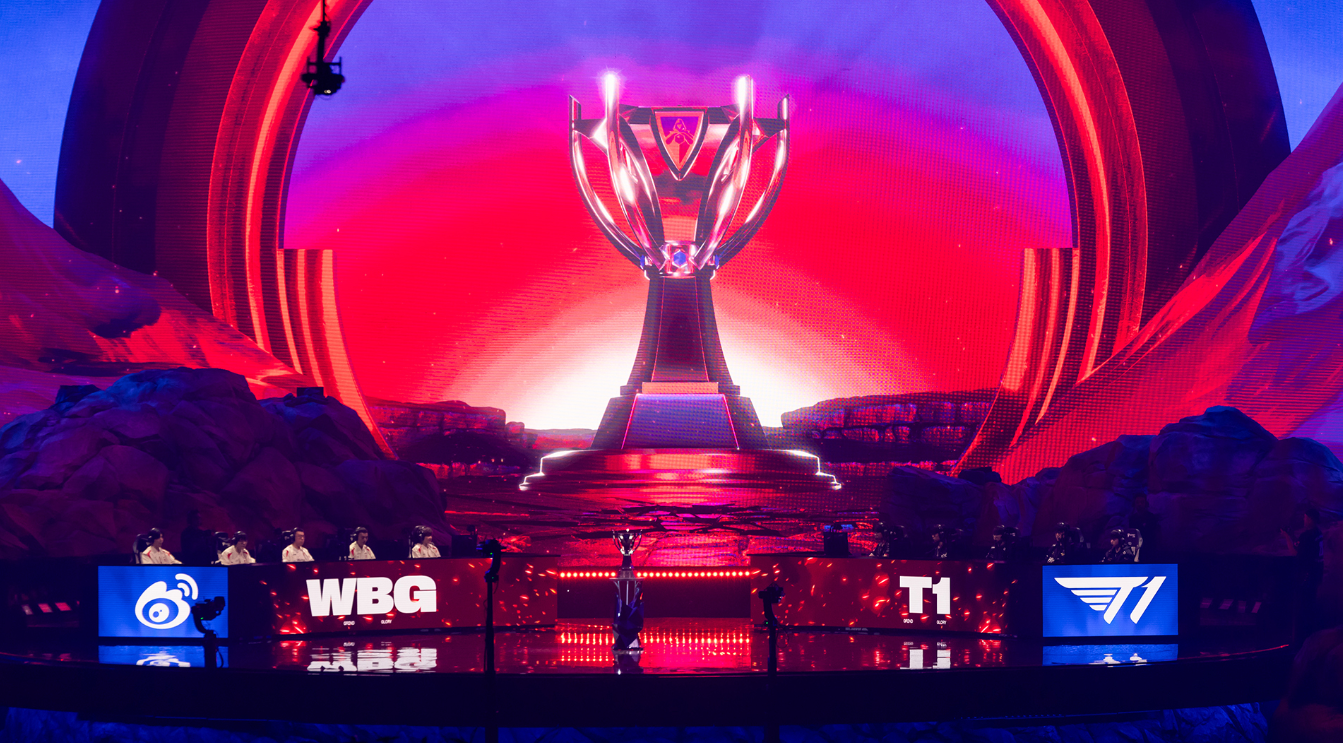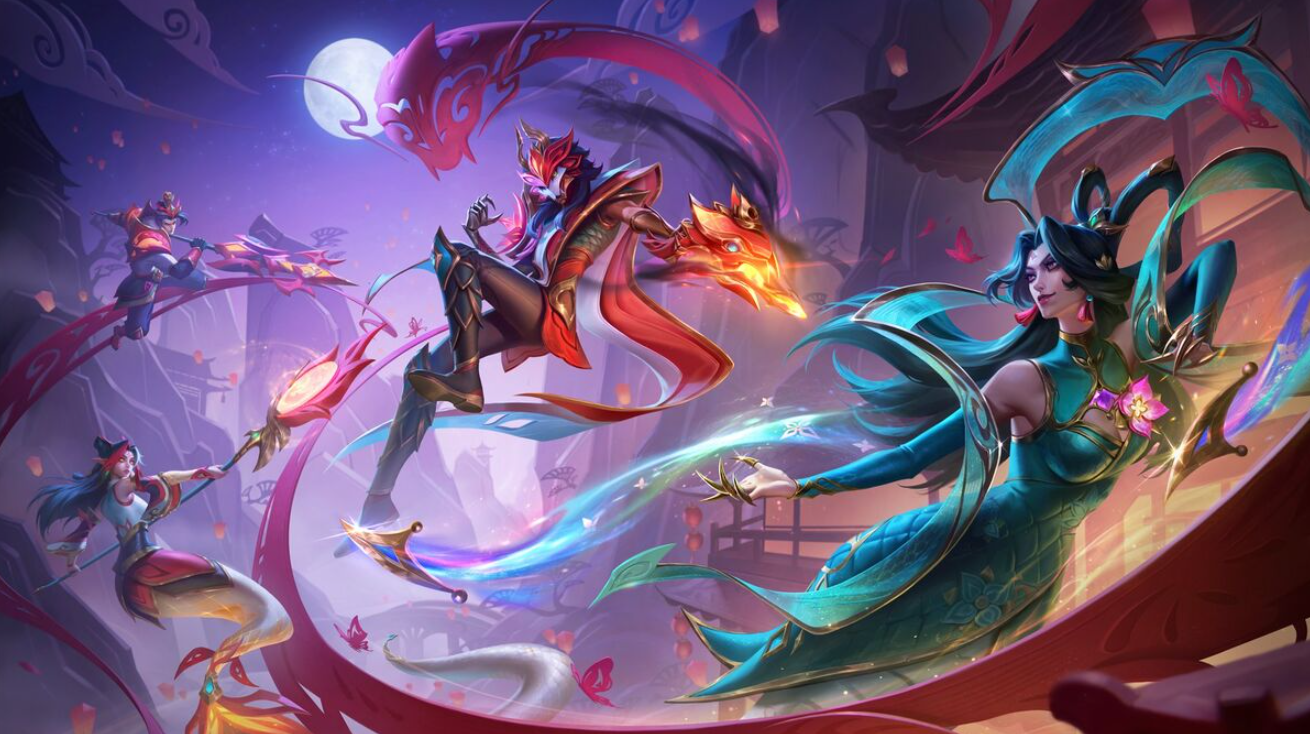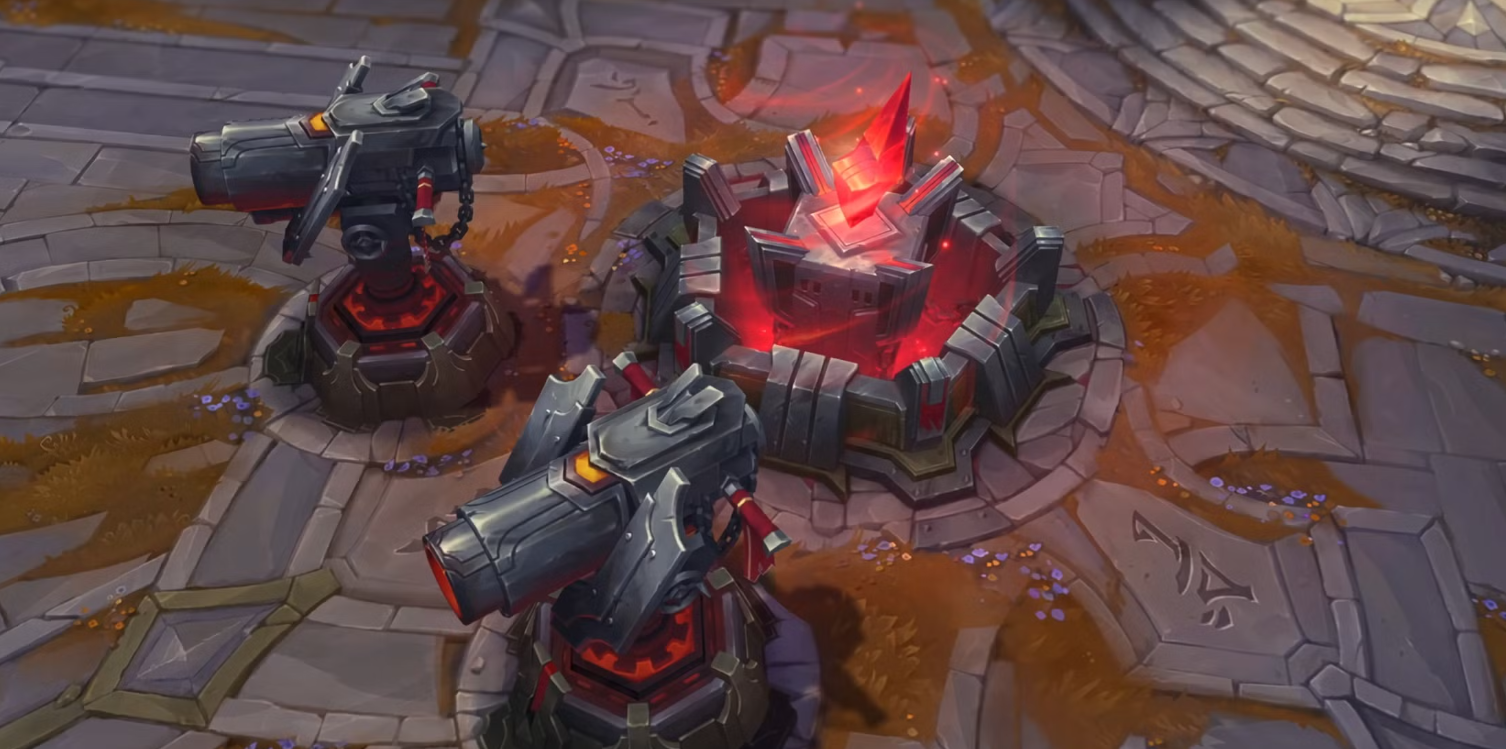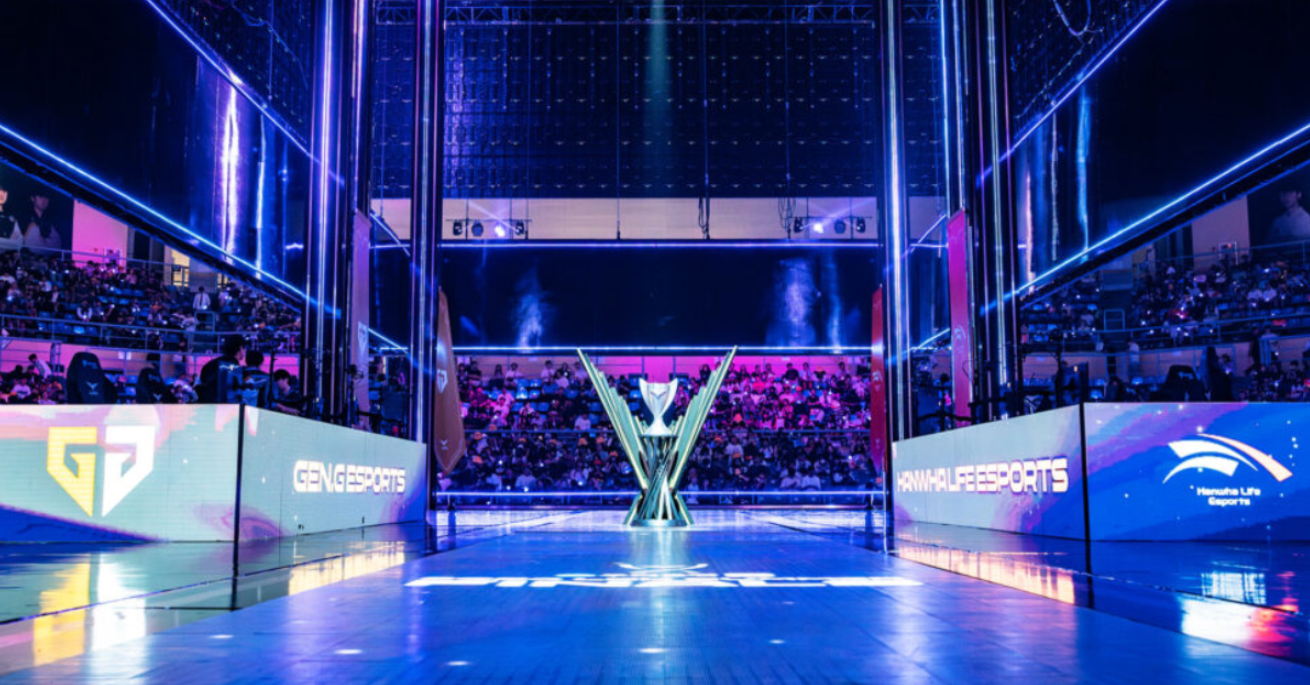
In a blog post on June 11th, Riot Games announced several significant changes coming to the global League of Legends esports landscape. Chief among these is the transformation of the North American LCS and Brazilian CBLOL leagues into new “conference” structures for the Americas region. Under the proposed model, each of the new North and South American conferences will feature six existing partner teams, one team from the Latin American LLA league, and an additional “guest team” spot that will allow for promotion and relegation through a Tier 2 system. This will result in a total of eight teams competing in each conference. To facilitate this restructuring, Riot has begun negotiations with teams to establish these new inter-regional leagues. The Americas region will also adopt a three-split format similar to the LEC in Europe, with an international event at the end of each season. Alongside these changes to the regional structure, Riot also revealed plans for a brand new third global tournament to be added to the League of Legends esports calendar. Details are still scarce, but Riot stated this new event will take place annually and feature representative teams from each of the game’s major regional leagues.
The existing Mid-Season Invitational and World Championship tournaments will continue, but this new event is positioned as an additional opportunity for international competition and recognition. Riot hopes this will further strengthen the cross-pollination of talent and strategies between regions. These sweeping changes come at a pivotal time for the League of Legends esports scene. The game’s competitive landscape has grown increasingly complex and fragmented over the years, with multiple leagues, circuits, and tournaments operating in parallel across the globe. Riot’s new plans appear aimed at streamlining and consolidating this ecosystem, while also introducing new avenues for up-and-coming teams to break into the highest levels of play. Overall, the community will be closely watching to see how these ambitious reforms unfold. Riot is clearly intent on evolving the professional LoL experience, and these developments could have far-reaching implications for the game’s future as a premier esport title. Time will tell if these changes are successful in unifying the global competitive scene and driving continued growth and viewership.
Table of Contents
Riot Games also outlined the structure of the new American splits
Riot’s proposed changes to the global League of Legends esports landscape include a revamped regional structure and a brand new international tournament. At the regional level, the current North American LCS and Brazilian CBLOL leagues will be transformed into two separate conference-style formats – one for North America and one for South America. Each conference will feature six partner teams, one representative from the Latin American LLA league, and an additional “guest team” spot that will be determined through a Tier 2 promotion/relegation system. In the first split of this new regional format, teams will compete solely within their respective North or South American conferences. The top finishers from each conference will then advance to inter-conference play, with the eventual winner earning a spot at Riot’s new global tournament. For the second split, the top team from each Americas conference will qualify for the existing Mid-Season Invitational (MSI) event, ensuring two representatives from the region. By the third split, a Regional Championship will determine the three teams from the Americas that will advance to the annual League of Legends World Championship. Alongside these changes to the Americas, Riot also plans to create a single, unified Asia-Pacific League by combining the current national leagues such as the VCS, PCS, LJL and LCO. This streamlined regional structure mirrors the approach Riot has successfully implemented for its VALORANT esports ecosystem, which features four major regional leagues feeding into global tournaments. Overall, these sweeping reforms appear aimed at unifying and strengthening the competitive League of Legends landscape on a global scale. The new inter-conference play and additional international event promise to enhance cross-regional competition and talent exchange. However, the community will be closely watching to see how these ambitious plans unfold in the coming years. Beyond the structural changes to the regional leagues, Riot has also outlined plans for a brand new international tournament that will become an annual fixture on the League of Legends esports calendar. While details are still sparse, Riot stated that this new event will feature representative teams from each of the game’s major regional leagues. It will sit alongside the existing Mid-Season Invitational (MSI) and World Championship tournaments, offering another prestigious stage for global competition and recognition. According to Riot, the addition of this third global event is intended to further strengthen the cross-pollination of talent and strategies between regions.
By providing more frequent opportunities for international play, the company hopes to foster deeper connections and rivalries within the worldwide LoL esports community. This emphasis on increased global integration aligns with Riot’s broader vision for the future of League of Legends esports. The company has long sought to create a more unified, interconnected competitive ecosystem – one that celebrates the diversity of regional play styles and talent pools, while also highlighting the game’s status as a true worldwide phenomenon. The proposed restructuring of the Americas and Asia-Pacific regions represent a significant step towards realizing this vision. By consolidating disparate national/continental leagues into larger conference-style formats, Riot aims to drive higher production values, more sustainable team ecosystems, and more compelling narratives for fans. Crucially, the new promotion/relegation “guest team” slots within these regional conferences should also provide fresh opportunities for up-and-coming organizations to break into the highest levels of competitive LoL. This could inject valuable new blood and creativity into the scene, further diversifying the pool of talent on display. Of course, successfully executing such a complex overhaul of the global esports infrastructure will be no easy feat. Riot will need to navigate a myriad of logistical, financial and political hurdles as it works to align team owners, league partners, and players behind this ambitious transformation. The company has emphasized that these plans are still in the proposal stage, with ongoing negotiations and feedback from stakeholders likely to shape the final form of the new ecosystem. Riot has promised additional details in the coming months as the transition process gains momentum. Ultimately, the success or failure of these reforms will hinge on Riot’s ability to balance the competing interests and priorities within the LoL esports community. If implemented thoughtfully and collaboratively, the proposed changes could usher in an exciting new era of global competitive play. However, any missteps or resistance from key constituencies could undermine the entire endeavor. As such, the community will be closely watching to see how these plans evolve in the months and years ahead. The stakes are high, as the future trajectory of League of Legends as a premier esport hangs in the balance. But if Riot can pull off this ambitious restructuring, the potential rewards – in the form of heightened viewership, engagement, and cross-regional fan fervor – could be immense.
The New International Tournament: A Streamlined Global Showcase
Riot’s latest plans for the League of Legends esports ecosystem include an exciting new international tournament. This event will feature the top teams from the game’s five major regional leagues – the LEC, LPL, LCK, the newly unified Americas league, and the consolidated Asia-Pacific league. To accommodate this new tournament, all LoL regions will eventually adopt a three-division structure similar to the LEC’s current format. While this new international event will be smaller in scale, with only the winners of each regional league participating, it promises to be an electrifying LAN spectacle. The timing of this tournament is strategically placed after the first “Winter Split” in each region. Teams will then have the opportunity to qualify for the traditional Mid-Season Invitational (MSI) in the second split. After MSI, the focus will shift to preparing for the pinnacle of the LoL esports calendar – the World Championship. The third and final split of the season will culminate in a regional championship event, mirroring the successful model pioneered by the LEC in 2023. According to Riot, this new tournament structure represents a more streamlined approach to the LoL esports ecosystem. The company believes fans will find the calendar easier to follow, with a clearer progression of high-stakes international events. Of course, these changes do come with certain trade-offs. Notably, the reduction in the overall number of Tier 1 teams may be a concern for some. However, Riot argues that by focusing support and resources on fewer organizations, they can ensure greater revenue stability and competitive quality. “By reducing the number of teams, we can focus support from the GRP (Global Revenue Pool), ensuring revenue is distributed among fewer teams, thereby increasing revenue per team,” Riot explained. Ultimately, Riot’s vision is to create a more cohesive and compelling global ecosystem for League of Legends esports. The new international tournament, paired with the streamlined regional structures, aim to foster deeper cross-regional rivalries and talent exchange. If executed successfully, these changes could usher in an exciting new era of worldwide LoL competition. One of the key drivers behind Riot’s global restructuring is the desire to create a more engaging and accessible fan experience. By consolidating the regional leagues, the company hopes to cultivate stronger narratives and storylines that resonate with viewers across the world. “Currently, the vast number of national/regional leagues can make it difficult for casual fans to follow the full scope of competitive LoL,” explained a Riot spokesperson. “By streamlining the ecosystem, we can shine a brighter spotlight on the most compelling teams, players, and rivalries.” This emphasis on narrative-building is crucial, as it allows fans to develop deeper emotional connections to the sport. When viewers can easily track the journeys of their favorite organizations and stars, they are more likely to remain invested and engaged throughout the season. Moreover, the new international tournament promises to amplify these narratives on a global scale. As the top teams from each region clash on the LAN stage, storylines of national pride, historic rivalries, and individual legacies will naturally emerge. “We want fans to feel the same level of investment and anticipation for this new international event as they do for the Mid-Season Invitational and Worlds,” the Riot spokesperson added. “By creating more opportunities for cross-regional competition and dialogue, we can foster a truly worldwide LoL esports culture.”
Beyond the fan experience, Riot’s restructuring plans also aim to create a more stable and viable ecosystem for organizations and professional players. The shift to a conference-style regional format, with fewer total teams but increased revenue per club, is expected to provide a stronger financial foundation for Tier 1 franchises. This, in turn, should allow teams to invest more resources into player salaries, coaching staff, training facilities, and other key infrastructure. “One of the persistent challenges in LoL esports has been the volatility and uncertainty faced by many teams,” noted the Riot spokesperson. “By streamlining the ecosystem and concentrating resources, we hope to foster an environment where organizations can build true long-term sustainability.” This stability will likely have a trickle-down effect, benefiting the professional players themselves. With more secure, lucrative contracts and better support systems in place, top talents will have increased incentive to remain in the LoL esports scene for the long haul. Additionally, the new “guest team” promotion/relegation slots within the regional conferences aim to create fresh pathways for emerging talent. This influx of hungry, ambitious players should help to drive competitive standards ever higher, further elevating the quality of play across the board. “We want to ensure that LoL esports remains an attractive, viable career option for the world’s best players,” the Riot spokesperson said. “By investing in the health and longevity of our ecosystem, we can create an environment where elite competitors can thrive for years to come.” Of course, successfully executing such a complex overhaul of the global esports infrastructure will be no easy feat for Riot Games. The company will need to navigate a myriad of logistical, financial and political hurdles as it works to align team owners, league partners, and players behind this ambitious transformation. One potential point of friction could arise from the reduction in total Tier 1 teams. While Riot believes this will yield greater stability and revenue per organization, some stakeholders may push back against limiting access to the highest levels of competition. “We recognize that these changes will be disruptive for certain teams and leagues,” acknowledged the Riot spokesperson. “Our goal is to create a healthier, more sustainable ecosystem in the long run, but we know there will be difficult conversations and tough decisions along the way.” Additionally, Riot will need to carefully manage the transition process to ensure minimal disruption to existing player and team contracts, as well as established fan bases and broadcast partnerships. “Timing and sequencing will be critical,” the spokesperson added. “We want to roll out these reforms in a way that minimizes upheaval and maintains the integrity of our competitions. It’s a delicate balance, but one we’re committed to achieving.” Beyond the structural changes, Riot will also need to finalize the details and format of the new international tournament. Questions remain around prize pools, qualification criteria, and the overall vision for how this event will fit into the broader LoL esports calendar. “This new tournament is a major priority for us, but we want to make sure we get it right,” the Riot spokesperson said. “We’ll be engaging closely with our regional partners and the community to gather feedback and refine the concept over the coming months.”
Ultimately, the success or failure of Riot’s global restructuring plans will hinge on the company’s ability to navigate these complex challenges. If implemented thoughtfully and collaboratively, the proposed changes could usher in an exciting new era of League of Legends esports. However, any missteps or resistance from key constituencies could undermine the entire endeavor. As such, the community will be closely watching to see how these plans evolve in the months and years ahead. The stakes are high, as the future trajectory of League of Legends as a premier esport hangs in the balance. But if Riot can pull off this ambitious restructuring, the potential rewards – in the form of heightened viewership, engagement, and cross-regional fan fervor – could be immense.




